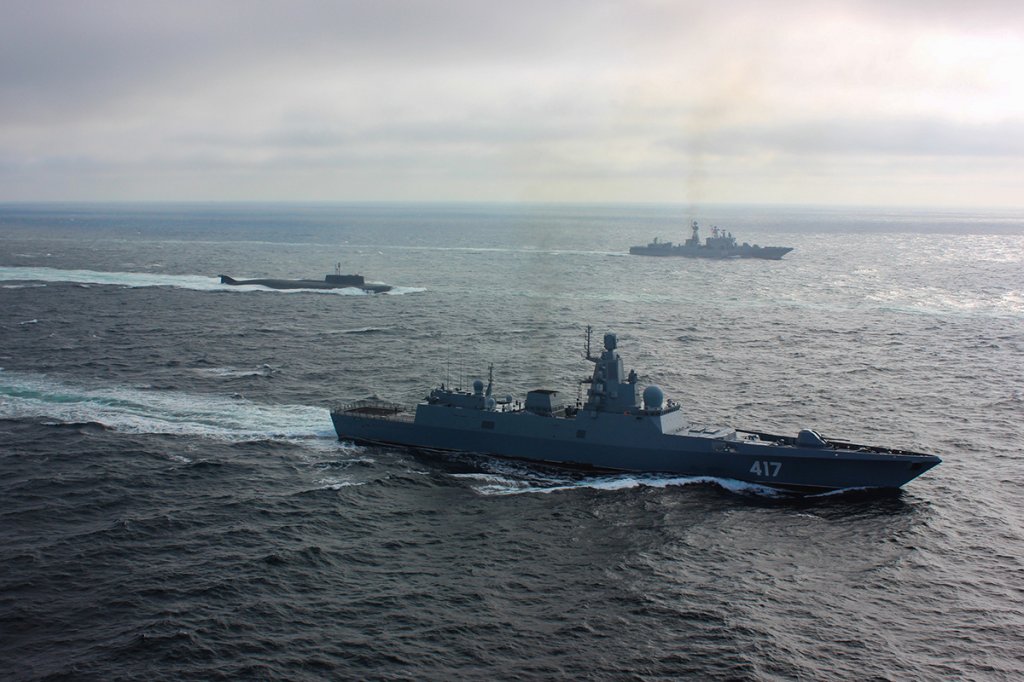It’s been a long time since Russia sent nuclear-armed ships out to sea, but Norwegian intelligence operatives report that Russia’s Northern Fleet just left its ports in the Baltic Sea carrying tactical nuclear weapons for the first time since around the fall of the Soviet Union.
During the Cold War, the Soviets, like the Americans and NATO allies, routinely sent ships to sea carrying a nuclear threat – or deterrent, depending on how someone might look at the strategic picture. In the three decades that followed, Russia and its military have seen its share of ups and downs. Deploying nuclear-armed ships was not something the Russians did.
But in that time also, democratic hopes shifted from the flawed idealism of former Russian President Boris Yeltsin’s leadership to the cunning, increasingly autocratic regime of Vladimir Putin. Russia has also recaptured the same aggression toward its neighbors that was once a standard of the Soviet Union.
While the Soviets may have held its Eastern Bloc, anti-Western coalition together by force, it never threatened a nuclear strike against any of them, let alone deployed a tactical nuclear force as a threat. This is what has NATO allies so concerned about the recent developments in the Baltic Sea.
“The key part of the nuclear potential is on the submarines and surface ships of the Northern Fleet,” Norway’s intelligence service said in a report. The intelligence report issued by Norway went on to say that the deployment of such weapons are “a particularly serious threat in several operational scenarios in which NATO countries may be involved.”
Russia has always had the ability to threaten alliance members with submarine-based nuclear weapons, conventional submarine tactics, cyber attacks, and anti-satellite operations, but actually deploying the nuclear arms is raising alarms across the continent.
Since the 1950s, the United States has maintained a “nuclear triad” as a deterrent. This “backbone of national security” involves land, sea, and air-based nuclear weapons. The sea consists of submarine-launched ballistic long-range missiles, aboard 14 nearly-undetectable Ohio-class submarines. From the land, 400 intercontinental ballistic missile (ICBM) silos, ready to launch on a moment’s notice. From the air, 46 nuclear-capable B-52H Stratofortress and 20 B-2A Spirit aircraft are ready to deliver a nuclear payload anywhere in the world.

It was a triad that helped deter the Russians during the Cold War, but now Russia has pledged to develop a nuclear triad of its own. In January 2023, Russian Defense Minister Sergei Shoigu said the Russians will ensure their sovereignty by creating the three legs of ICBMs, nuclear submarines, and strategic bombers.
This deployment of sea-based nuclear weapons may be the fulfillment of that promise. Russia has 68 heavy bombers in its nuclear air fleet, 11 nuclear-powered ballistic missile submarines, and roughly 306 strategic intercontinental ballistic missiles. It doesn’t match the numbers or technology of the American nuclear triad, but the number of nuclear strikes it could make is more than enough.
Russia is working on modernizing its nuclear capabilities with the construction of new Borei-class ballistic submarines, refitting its air bomber fleet to carry nuclear-armed weapons, and developing a new ICBM – the Sarmat or “Son of Satan” missile, which has already seen a successful test launch.
As if tensions in Europe weren’t high enough, Russia has also made a number of thinly-veiled nuclear threats since its invasion of Ukraine in February 2022. Russia has 6,000 nuclear warheads, the most in the world, a fact that is enough to make any intelligence service nervous when they’re actually deployed.

